
Eating clean is all about maximizing your nutrient intake while eating mouthwatering meals made from natural, wholesome ingredients. So what better way to achieve that goal than to stock your kitchen with an array of super foods replete with health-promoting, healing benefits? To help you do just that, for the first time ever, Clean Eating has handpicked the 20 most-powerful superfoods available to you right now that are teeming with good-for-you nutrients. Of course, choosing just 20 superfoods required us to make some tough choices about what to include – our criteria when evaluating foods were that they had to be extremely high in healing nutrients, generally low in calories and deliver substantial antioxidant and anti-inflammatory benefits.
Narrowing down the list of power foods was no easy feat – we looked at the most up to-date research, considered ORAC values (a unit of measurement that assesses the antioxidant value of a food) and then we surveyed our panel of revered experts. Our advisers included our magazine editors, several dietitians, a PhD in nutrition as well as a holistic nutritionist. We tabulated the votes and the result is the vibrant, varied and well-rounded list you see here.
Often, people mistakenly believe that superfoods are hard to find, exorbitantly expensive or shipped in from the ends of the earth – but they don’t have to be. In fact, all of the superfoods on our list are ingredients that are readily available at your local grocery store. In this section, you’ll glean information on the impressive health benefits these foods have to offer, as well as 20 recipes and additional tips on how to easily (and deliciously) integrate them into your diet. We’re showing you just how simple it is to eat your way to amazing health!

1. Beets
Blood Purifier
In Traditional Chinese Medicine (TCM), beets are believed to be a natural liver tonic and blood purifier. The benefits of beets aren’t confined to Eastern traditions, though. Betaine, a substance found in beets, supports overall liver function and helps the liver process fats. Beets are also an excellent source of folate, or vitamin B9, a nutrient (along with betaine) that helps balance the body’s levels of homocysteine, an amino acid that, when elevated, may increase the risk of heart disease. Beets actually pack a double punch for your health as the leaves are also nutritionally rich, especially in bone-building calcium and anemia-preventative iron, as well as the antioxidant vitamins A and C.More Uses For Beets
Roast beets with just a splash of balsamic vinegar to use them in salads or as a side dish. They are also surprisingly good when served raw, in thin slices or as spirals over salads. Pickled beets also make a great addition to sandwiches, wraps and burgers. And don’t forget to use the beet greens as well – use them as you would any other green, such as in salads, sautéed or in stir-frys.Recipe: Red Velvet Cake with Beets & Cream Cheese Glaze

2. Basil
Body Protector
Think of basil as a body protector. Two flavonoids found in the popular herb – orienting and vicenin – are believed to protect chromosomes from environmental damage, such as radiation. Basil also provides a moderate degree of protection against bacterial growth due to the presence of strong oils found in and on basil leaves. A natural anti-inflammatory, basil contains a substance that blocks the activity of cyclooxygenase (COX), an inflammatory-enducing enzyme – and that’s exactly what active ingredients in pain medications, such as ibuprofen and aspirin, do, too. Basil’s high percentage of vitamin A may help prevent the oxidation of blood cholesterol, which could lead to the hardening of arteries. Also worth noting: Research shows that washing produce in a solution containing just 1% of basil oils resulted in a significant reduction in the presence of shigella, an infectious bacteria spread through contaminated water and food that can cause intestinal pain, diarrhea or fever.More Uses For Basil
Aside from the classic uses for basil such as in pesto, tossed into pastas or as a pizza topping, basil makes an interesting addition to any berry-based smoothie, especially when combined with blueberries or strawberries.Recipe: Halibut Pouches with Basil Cucumber Salsa
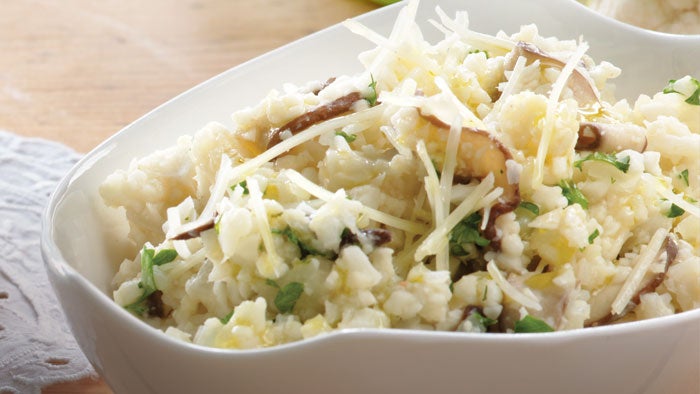
3. Cauliflower
Anticarcinogen
Cauliflower is a member of the Brassicaceae or cabbage family and, as such, contains many of the compounds that give this vegetable family its rightly deserved reputation as potent cancer fighters.Cauliflower contains sulforaphane, which acts as an antioxidant and stimulator of naturally detoxifying enzymes in the body. When sulforaphane enters the bloodstream it powers up the body’s antioxidant defense systems, activating enzymes in the liver that help remove carcinogenic molecules from cells. Sulforaphane is believed to be partly responsible for the lowered risk of cancer that’s associated with the consumption of cauliflower and other cruciferous vegetables, such as cabbage, broccoli and Brussels sprouts.More Uses for Cauliflower
Cauliflower can be a great lower-carb substitute for rice (as shown here; see recipe below for instructions) in dishes such as fried rice. Alternatively, steam cauliflower with garlic then purée with goat cheese for a delicious swap for mashed potatoes.Recipe: Cauliflower “Rice” Risotto with Mushrooms & Truffle Oil
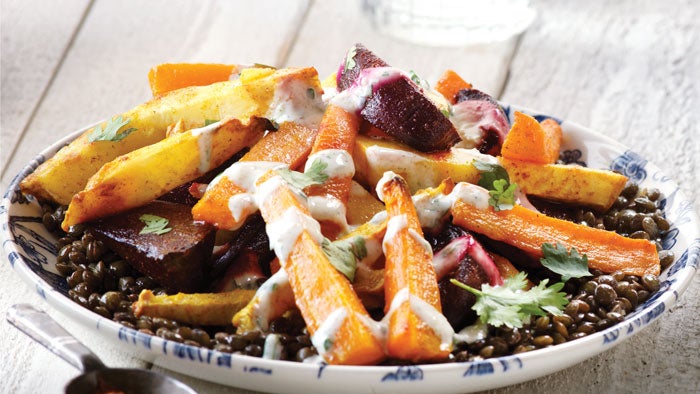
4. Turmeric
Potent Anti-Inflammatory
Turmeric is one of the spices that gives Indian curries their distinctive flavor and hue. This unique spice is part of the ancient healing systems of India, China and the Polynesian Islands, and it holds a place of distinction in both Ayurvedic (Indian) and Chinese medicine. Believed to be a potent anti inflammatory, one of turmeric’s traditional uses has been for the treatment of arthritis. While turmeric contains a whole family of active compounds, the one most responsible for turmeric’s medicinal effect is curcumin. Although more clinical trials on humans are needed, curcumin has shown promise in slowing the growth of some types of cancers (including pancreatic and colon) as it may help fight cancer cells by reducing either the number or size of tumors.More Uses for Turmeric
Turmeric is perfect in a soothing tea. Just stir 1 to 2 teaspoons of the ground spice into a cup of boiling water with fresh ginger slices and a teaspoon of honey. The spice is also a welcome addition to curries and stir-fries.Recipe: Turmeric-Roasted Root Vegetables with Lentils & Cilantro Yogurt Sauce

5. Miso
Cardioprotective & Antioxidant-powered
Miso is an enzyme-rich, naturally fermented soy product that’s been a mainstay of Japanese cooking for centuries. It’s made by mixing cooked soybeans with salt and a fermenting agent called koji. Miso is high in antioxidant activity, stimulates the secretion of digestive fluids and may have a protective effect against chemicals and radiation due to the presence of dipicolinic acid, a substance that binds to heavy metals, potentially helping your body excrete them. Miso is almost always eaten as a soup with other health-promoting ingredients, such as seaweed, which has made it hard to research the health effects of miso as an isolated ingredient. Despite being very high in sodium (1 teaspoon typically contains 200 to 300 milligrams), miso consumption has been shown to correlate with a lowered risk of cardiovascular disease. Some researchers speculate this cardioprotective effect may be due to the peptides (the building blocks of protein) found in fermented soybeans. Due to the fermentation process, miso is also a source of probiotics, or beneficial gut bacteria, that can help improve digestion and bloating. Look for brands of miso that list “unpasteurized” on the label as the heat during pasteurization can destroy these fragile microorganisms.More Uses for Miso
Whisk miso into Asian-style vinaigrettes and dips for a boost of umami flavor. Mix with sesame oil, mirin and seasonings and a touch of sweetener and brush on grilled or broiled vegetables. Because probiotics are sensitive to heat, the less miso is heated, the more benefits it yields.Recipe: Miso Orange Glazed Chicken with Carrots & Leeks

6. Butternut Squash
Vitamin A Giant
Butternut squash is a vitamin A giant, packing in a whopping 1,144 micrograms of it per cooked cup, which more than meets the recommended daily value (DV) of this protective vitamin for men and women. Butternut is unique among winter squashes because it contains a substantial amount of beta-cryptoxanthin, a carotenoid that may lower the risk of developing lung cancer. And some research indicates that exposure to carcinogens in cigarettes – either directly or secondhand – can induce vitamin A deficiency.More Uses for Butternut Squash
Chop butternut squash into “fries” and bake with the spices of your choice. Purée cooked squash and stir into chili for added nutrition, or use puréed squash in baking as an alternative to canned pumpkin.Recipe: Butternut Squash Soufflés with Leeks & Gruyére
7. Walnuts
Remarkable Omega-3s
Walnuts contain the highest amount of alpha-linolenic acid (ALA) of any nut, the plant-based omega-3 fatty acid. In addition to the remarkable things omega-3s do for your heart, such as help lower triglycerides and reduce plaque formation in blood vessels, this essential fatty acid also supports your think tank. Omega-3s help facilitate the movement of feel- good neurotransmitters (dopamine and serotonin) in and out of cells, while also supporting memory and problem solving. If that’s not enough, walnuts could help you stay trim, too. According to experts at Loma Linda University, eating four to six walnut halves before meals helps reduce appetite and may cause people to eat less at meals.More Uses for Walnuts
Walnuts make a lovely coating for shrimp and the same recipe can be used on baked chicken as well. Alternatively, toss raw or toasted walnuts into green salads, tuna salads, oatmeal and trail mix.Recipe: Walnut-Crusted Shrimp with Roasted Red Pepper Dip
8. Maca
Energy & Sexual Healing
Maca is a vegetable crop cultivated in Peru for thousands of years and the plant’s roots are believed to have unique medicinal qualities. Maca’s main claim to fame is as a libido enhancer, although it is also well-known for its ability to boost overall energy. “Maca is also known as ‘Peruvian ginseng’ (despite the fact that it is not a member of the ginseng family), because it is used as a folk remedy to increase stamina, energy and sexual function,” says Cathy Wong, a naturopathic doctor and expert in alternative medicine. Formal studies have mixed results: Some showed maca has a positive effect on sexual desire and sexual dysfunction while others showed it had no effect. Another study found that in cases of sexual dysfunction caused by antidepressants, maca helped improve libido. Chris Kilham, author and founder of Medicine Hunter Inc., says maca has a long history of successful medicinal use for menopausal discomfort, infertility and sexual healing. Maca is most often sold as a supplement inpowder or pill form.
More Uses for Maca
Add to smoothies and popsicles, or sprinkle on your morning yogurt or oatmeal.Recipe: No-Bake Maca Brownie Bites
9. Chia Seeds
Stabilize Blood Sugar & Boost Energy
Chia seeds were largely unknown in North America until American researchers began sourcing and using chia as an alternative crop for Argentinean farmers. One of the researchers – Wayne Coates, a research professor who started studying chia more than 20 years ago – became an advocate for the seeds and started selling them commercially in North America. Chia was also in the spotlight during the ’80s and ’90s when Chia Pets were the latest craze, but the seed itself was not widely available in grocery stores. Chia and chia-based foods and beverages sprang up on store shelves several years ago as more and more nutrition experts heralded its nutritional benefits and consumer demand soared. While human studies are limited, anecdotal evidence suggests that eating chia seeds can boost energy, stabilize blood sugar and help with digestion. This is partly due to the high fiber content of the seeds – 1 ounce (just under 3 tablespoons) has 11 grams, almost half the daily fiber requirement for adults. Chia seeds also contain a good amount of calcium, magnesium and potassium, and they offer 30% of your Daily Value (DV) of manganese, an important mineral for bone health. When buying chia, remember that both the white and the black seeds are fine choices. But avoid the red (immature), brown or black seeds that are smaller than regular chia seeds – those are weed seeds.More Uses for Chia
Chia seeds make an excellent, protein-packed breakfast pudding. Simply mix 1 tablespoon of chia seeds with 1 cup of almond milk and a pinch of cinnamon. Allow the mixture to thicken overnight and serve with fresh fruit.Recipe: Lemon Chia Pancakes with Mixed Berry Compote
10. Adzuki Beans
Protein & Fiber Stars
Adzuki beans are especially high in fiber – just 1 cup of cooked adzukis contains an absolutely impressive 17 grams. But that’s not all – it also supplies 17 grams of protein and a whopping 1,224 milligrams of potassium per cup. Many of the merits of adzuki beans apply to beans in general, including garbanzo, red kidney, black beans and pinto beans. So what’s so great about beans? All beans boast a great amount of fiber, a beneficial nutrient that aids digestion and helps lower cholesterol. Beans also contain an elixir of phytochemicals, including saponins, that may inhibit the growth of cancerous cells. In Traditional Chinese Medicine (TCM), adzuki beans in particular are said to have healing properties, specifically to support kidney, bladder and reproductive function. Another bonus? Adzuki beans are easier to digest than some other bean varieties and therefore may disprove the meaning of The Magical Fruit Song…More Uses for Adzuki Beans
Toss adzuki beans into soups, chilies, stews and stir-fried greens for an added protein and fiber boost. Adzuki beans also work well in veggie burgers or as a substitute for pinto beans in refried beans.Recipe: Adzuki Bean Hummus with Spiced Beef Stir-Fry
11. Kimchi
Anti-Cancer Properties
A traditional, fermented Korean dish, kimchi (which is typically made from ingredients including Chinese cabbage, daikon radish, garlic, Korean red pepper powder, onion, fish sauce and ginger) is the perfect example of “the whole is greater than the sum of its parts.” Each and every ingredient lends vitamins and minerals that make kimchi one impressive condiment. Four of kimchi’s main ingredients – cabbage, daikon radish, onions and garlic – have displayed significant heart-health benefits and some anticancer properties. Garlic, for example, has been shown to reduce plaque buildup in blood vessels and lower “bad” LDL cholesterol. Kimchi is also a superfood because of the way it’s prepared: fermentation. During fermentation, healthy bacteria such as lactobacilli are developed. Among its many benefits, lactobacilli are probiotics believed to support and improve the body’s immunity. Like other naturally fermented foods, shop for brands that list “unpasteurized” on the label as the heat during pasteurization can destroy their healthy bacteria.More Uses for Kimchi
Kimchi makes an excellent topper for sandwiches, burgers and wraps. Chop and toss into stir-frys and noodle dishes after cooking. Kimchi also works well to create Asian-Mexican fusion in dishes such as tacos, nachos and quesadillas. Remember that it’s preferable to always add kimchi at the end of cooking in order to preserve its probiotic benefits.Recipe: Korean Kimchi Stew with Tofu
12. Ginger
The Universal Remedy
In ancient Ayurvedic medicine, ginger is known as the “universal remedy.” This little plant, with its antimicrobial and antiviral properties, contains a whole pharmacy of ingredients with multiple health benefits. Gingerol – the ingredient in ginger responsible for its pungent and spicy flavor – is an antiemetic, meaning it has the ability to help prevent and treat nausea and vomiting. That’s why ginger tends to have the awesome ability to soothe an upset stomach and curb nausea. Further studies demonstrate ginger’s positive health effects on the gastrointestinal tract, the cardiovascular system, pain, fever, immunity and even the deterrence of cancer cells. It’s no wonder that a cup of hot ginger tea with lemon is a home remedy for all sorts of “under-theweather” symptoms!More Uses for Ginger
Ginger is a pungent addition to virtually any stir-fry, soup or salad dressing. A thumb-sized piece brings a spicy burst of flavor to any fresh-squeezed fruit or vegetablejuice. Chopped ginger mixed with citrus juice and chiles makes an excellent marinade as well.
Recipe: Ginger Acorn Squash Soup with Spicy Chickpeas
13. Coconut
Brain Fuel
A long-term study designed to examine the health of people living on the Pacific Islands of Tokelau and Pukapuka, where coconuts are a staple food, showed impressive results. Despite eating a high-fat diet (up to 60% of calories coming from fat; most of those fat grams being saturated fat from coconuts), the Tokelau and Pukapuka islanders were virtually free of atherosclerosis, heart disease and colon cancer, among other conditions. Additionally, the islanders were overwhelming lean and healthy, and digestive problems were rare. Maybe the islanders were onto something! It turns out the saturated fats in coconut are mainlymedium-chain triglycerides (MCTs). According to the Physicians’ Desk Reference for Nutritional Supplements, 2nd Edition (Thomson Reuters, 2008), there is preliminary evidence that MCTs may be helpful in preventing or treating some cancers and may have positive effects on immunity. According to neurologist David Perlmutter, MD, author of Grain Brain (Little, Brown and Company, 2013), the fat in coconut and coconut oil makes excellent fuel for the brain. A 1/2-cup portion of shredded coconut meat has almost 4 grams of fiber, 143 milligrams of potassium and 13.5 grams of fat, some of those being easily digested MCTs.
More Uses for Coconut
Fresh coconut is a rich addition to desserts such as macaroons, cakes or muffins. It works in a savory context as well, as an addition to curries and stir-frys. And don’t forget the obvious – fresh pieces of coconut eaten out of hand are a delicious snack!Recipe: Fresh Coconut Jicama Slaw
14. Mustard Greens
Powerful Detoxifier
A cheerleader for your liver, mustard greens have unique compounds that help support your body’s ability to detoxify and help thwart the development of cancer cells. Powerful antioxidants from mustard greens help boost what’s referred to as Phase 1 detoxification (the first step in the liver’s detoxification process), while also lending sulfur-rich nutrients to boost the liver’s second phase of detoxification. These strongly-flavored greens are also a great source of vitamins A, C and E, and a mix of anti-inflammatory phytonutrients such as quercetin. They’re also high on the list of veggies rich in vitamin K, an important nutrient that helps regulate the body’s inflammatory response, keeps calcium in bones and is critical for the healthy flow and clotting of blood. Did we mention that mustard greens taste absolutely amazing?More Uses for Mustard Greens
For a simple side dish, sauté chopped mustard greens and garlic in olive oil; stir in pinto beans. Alternatively, instead of kale chips, make a crunchy snack using mustard greens.Recipe: Savory Pancakes with Mustard Greens & Tahini Sauce.
15. Swiss Chard
Nutritionally Spectacular
Maybe it doesn’t come from an exotic forest in Brazil or from a tiny area deep in the Himalayas, but this common vegetable sold in almost every supermarket in America is nutritionally spectacular. One cup of cooked Swiss chard provides 4 grams of fiber, more than 100 milligrams of calcium, a staggering 961 milligrams of potassium (more than a banana) and more than 30 milligrams of vitamin C. But wait, there’s more! The same amount of chard is also incredibly rich in lutein and zeaxanthin, two members of the carotenoid family that are being researched heavily for their ability to protect eyesight and guard against vision problems such as macular degeneration. And it should be noted that 1 cup of Swiss chard provides all those nutrients for a mere 35 calories!More Uses for Swiss Chard
For a unique appetizer, wrap Swiss chard leaves around thin slices of fresh mozzarella seasoned with garlic and red pepper flakes; secure leaves with toothpicks and grill until cheese starts to melt. Or, try replacing spinach with chopped Swiss chard leaves in omelettes, frittatas and dips.Recipe: Swiss Chard Wraps with Almond Lime Dip
16. Sardines
Mood, Brain, Metabolism
If you can find a health food in a can, sardines are it. They’re simply loaded with omega-3 fatty acids, the benefits of which are legion. Omega-3 consumption is linked to improved mood, brain function, circulation and metabolism, as well as lowered blood pressure and a decreased risk of cardiovascular disease. And that’s not even opening the full can of benefits these little fish provide. They’re an excellent source of calcium – depending on the type, one can of sardines supplies 25% to 38% of the USDA recommended daily value (DV) of calcium. Sardines also pack a good dose of iron, magnesium, phosphorus, potassium, zinc, copper and manganese, not to mention the full spectrum of B vitamins. They’re also notable for being a superb source of vitamin B12: one little can provides more than three times the DV of this often-missed nutrient. And because sardines are low on the marine food chain, they are lower in toxins such as mercury. Fresh sardines are usually available during the summer months, otherwise you can opt for BPA-free cans or pouches.More Uses for Sardines
For a tapas-style dish, marinate sardines in a citrus-herb mixture and grill or sauté until slightly crispy. For another layer of flavor, add sardines to a homemade or purchased tomato sauce. Break up sardines gently with a spoon as the sauce heats (taste as you go and reduce or eliminate added salt as sardines usually contain enough).Recipe: Sardine & Cherry Tomato Spaghetti with Orange Bread Crumbs
17. Garlic
Heart Health
Garlic is one of the oldest medicinal foods on the planet. The Egyptian Ebers Papyrus, one of the earliest herbal medical texts, mentions garlic repeatedly. In ancient times, garlic was used to treat everything from leprosy and toothache to chest pain. But garlic is hardly just a folk remedy. Consider this: In numerous studies, garlic has been shown to be lipid lowering, anticlotting, antihypertensive, antioxidant and antimicrobial. Impressive? We think so! The key to the astonishingly wide range of health benefits in garlic seems to lie in a compound called allicin, which is created from the reaction of two other compounds – alliin and alliinase. Nature designed it so that the alliin and alliinase live in different parts of the garlic clove, so how you prep garlic is critical for the creation of allicin. Crushing or chopping garlic releases the enzyme alliinase, which reacts with the chemical alliin to form allicin. To get the most out of garlic’s primo health benefits, crush or chop garlic cloves (the finer the better) to join the active compounds and let them sit for 15 minutes before using.More Uses for Garlic
Garlic makes a delicious addition to virtually any sauce or vinaigrette. For a milder flavor, opt for roasted garlic, as used in this recipe, and toss cloves onto everything from sandwiches to pizzas and even desserts (yes, roasted garlic ice cream is surprisingly good!). Try blending roasted garlic cloves with your favorite dip ingredients, such as fresh herbs, sour cream or yogurt and cheese, for a pungent and delicious dip.Recipe: Chicken in Roasted Garlic Cashew Cream Sauce with Broccoli
18. Cacao Nibs
Anti-Inflammatory
It’s not uncommon to hear about the merits of dark chocolate, but you don’t often hear about dark chocolate’s less-processed relative, cacao nibs. Cacao nibs are pure cacao beans from the fruit of the cacao tree that have been harvested, fermented and dried, then peeled and broken up into pieces. (Note that cacao beans that are cleaned, roasted and processed after being dried are classified as cocoa, which is the more processed form of cacao.) What do cacao nibs and dark chocolate have in common? They both contain antioxidant flavanols, which are widely thought to carry a host of health benefits. One study published in the Journal of the American College of Cardiology showed that women with the highest weekly chocolate intake (45 grams or more) had a lower incidence of stroke compared to women who consumed the least amount of chocolate. These flavanols are also known to help lower blood pressure and act as an anti-inflammatory and vasodilator, meaning they open up the body’s blood vessels and arteries. According to a study published in The BMJ, higher levels of chocolate consumption are associated with a whopping 37% reduction in the risk of cardiometabolic problems, such as diabetes and heart disease. Where cacao nibs differ from dark chocolate is in fiber content – nibs contain a lot more, about 9 grams per ounce. Cacao nibs also contain a natural chemical called phenylethylamine, which speeds up the body’s pulse, making one feel more alert and focused.More Uses for Cacao Nibs
Add to homemade granola, trail mix or pancakes instead of chocolate chips; sprinkle on yogurt and oatmeal.Recipe: Cacao-Crusted Lamb Chops with Pear & Red Wine Reduction
19. Blueberries
Memory Food
The ultimate anti-aging memory food, blueberries contain compounds that help brain neurons communicate more effectively. Some studies have shown that eating blueberries daily dramatically slows the deterioration of memory and motor coordination associated with aging. Worsening eyesight is another predicament of aging. But blueberries might be able to help with that, too! Studies have found that blueberries may help improve night vision and reduce eyestrain. Blueberries and other dark purple-blue berries contain compounds called anthocyanins that act as both an antioxidant and an anti-inflammatory. This protective feature is critical, since inflammation and oxidative stress are risk factors for virtually every chronic disease, from Alzheimer’s and diabetesMore Uses for Blueberries
Cooked-down blueberries make an excellent naturally sweet glaze for meats or stronger-flavored fish such as salmon. Simply cook fresh blueberries in a saucepan with a bit of lime juice, maple syrup and a pinch of salt until the mixture is lightly syrupy, mashing the berries down as they cook.Recipe: Kale Salad with Blueberry Ginger Dressing
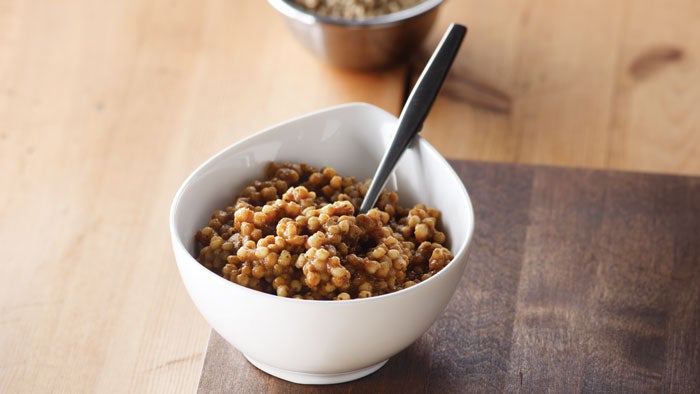
20. Sorghum
Naturally Gluten-Free
If you’re trying to avoid gluten, it’s preferable to seek out whole foods that are naturally gluten free than foods that have been extensively processed to have the gluten removed. And sorghum – a delicious, chewy whole grain – fits the bill perfectly. In 2013, researchers published a study of the sorghum genome in the Journal of Agricultural and Food Chemistry and confirmed it is completely gluten free and safe for people with celiac disease. Additionally, compounds in sorghum bran with high antioxidant properties may inhibit the development of type 2 diabetes. Other compounds called 3-deoxyanthocyanins – found mostly in darker sorghums and to a lesser extent in white sorghums – have been found to display strong blocking activity against the proliferation of human colon cancer cells.More Uses for Sorghum
Toss cooked sorghum with roasted veggies and your favorite vinaigrette for a hearty grain salad, or pop on the stove top as you would pop popcorn.Recipe: Slow-Cooker Pumpkin Pie Breakfast Sorghum








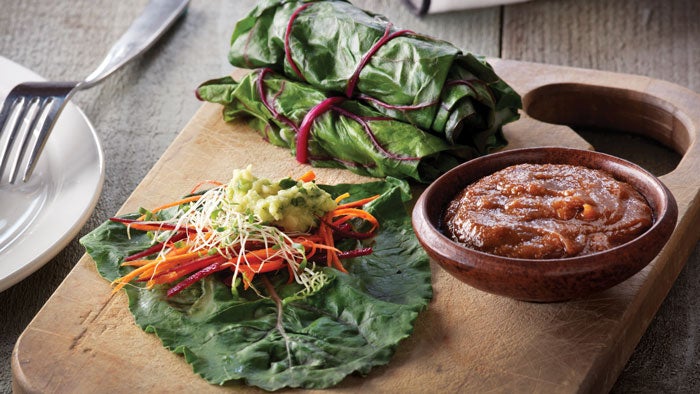
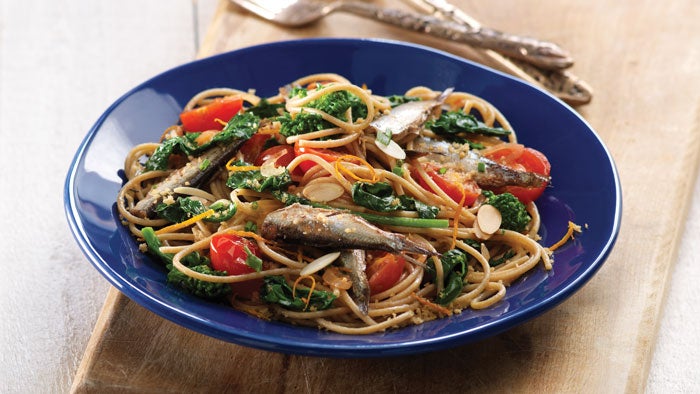
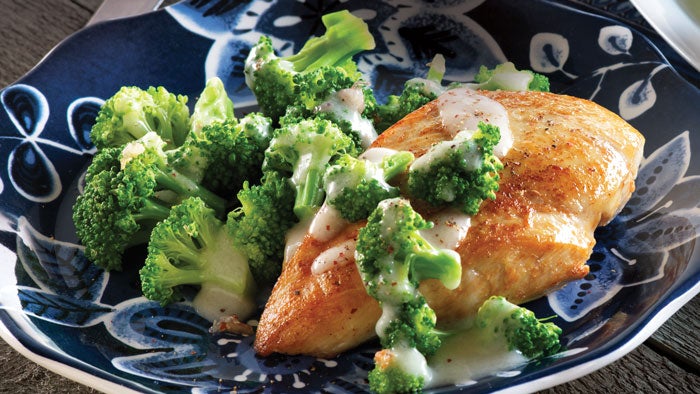
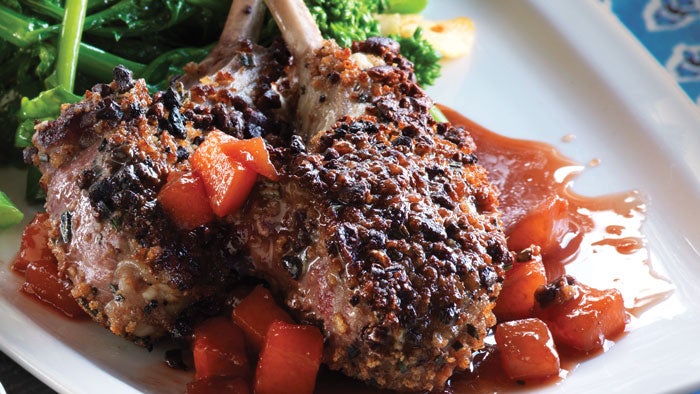

No comments:
Post a Comment